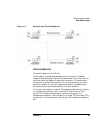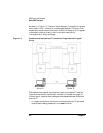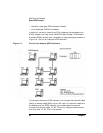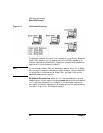
Chapter 1 43
SNA Terms and Concepts
Basic APPN Concepts
Basic APPN Concepts
Advanced Peer-to-Peer Networking (APPN) is a network architecture
that supports distributed network control. It makes networks easy to
configure and use, provides centralized network management, and
supports flexible connectivity.
An APPN network is composed of type 2.1 nodes. Each node in the
network is connected by a link to at least one other node in the APPN
network. CP-CP sessions are established over each of these links to
adjacent nodes (nodes in the same network that can establish direct
links without going through a third node). All of the nodes in an APPN
network share a common network name.
APPN nodes can include processors of various sizes, such as the
Application System/400 (AS/400), the Enterprise System/9221 (ES/9221)
running under Distributed Processing Program Executive/370
(DPPX/370), systems using Virtual Terminal Access Method (VTAM),
and HP-UX servers running SNAplus2.
APPN provides the following functions:
• Support for APPN network nodes and end nodes as well as non-APPN
peer nodes (see “APPN Node Types”)
• APPN control point functions (see “APPN Control Point”)
• Directory services to support finding specific logical units (see
“Locating Resources”)
• Topology and routing services to support session establishment using
intermediate session routing (ISR), automatic network routing
(ANR), or connection networks (CNs) (see “Session Routing” and
“APPN Connection Networks”)
NOTE An APPN node can also be connected to a subarea network, serving as
both an APPN node in a peer network and a peripheral node in a subarea
network.
APPN Node Types
The following types of nodes can be part of an APPN network:


















